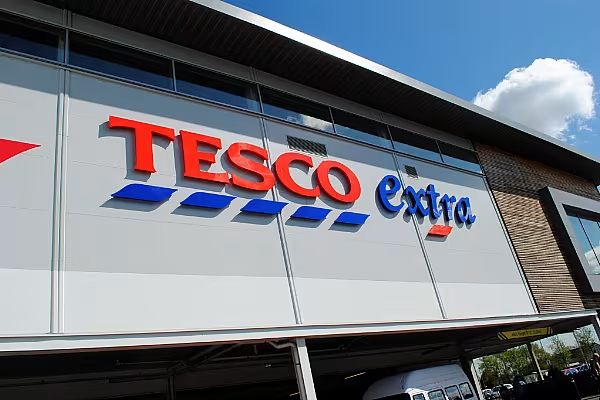Dave Lewis, chief executive of Tesco, has made a big deal of listening to customers. He's obviously listened to shareholders too.
As well as the third consecutive quarter of U.K. same-store sales growth and handy 60 percent increase in first-half operating profit before one-off losses, Lewis set out plans on Wednesday to boost the group operating margin from 2.2 percent in the first half to between 3.5 percent and 4 percent by the year to February 2020.
That's badly needed. The jump in Tesco shares after the report suggests optimism on Lewis' plan has trounced concern on the company's ballooning pension deficit.
While sales volumes have undoubtedly recovered from the company's nadir in 2014, the operating margin is still languishing far short of the about 6 percent it achieved five years ago.
As flagged by Gadfly on Tuesday, one of the obvious ways to boost margin is to cut costs, and Lewis has identified 1.5 billion pounds ($1.9 billion) of savings, from distribution and logistics, improving the way it operates stores, and using its global scale to make savings on items such as packaging and salad forks.
Lewis says this won't be at the cost of customer service. But it’s a risk. Some of Tesco's problems in the past were from dirty stores and not enough staff to serve customers. Tesco needs to be mindful it doesn't fall into this trap again, particularly if the consumer environment does become trickier.
Overall, it’s a brave plan. Aldi and Lidl are continuing to expand, while a price assault from Asda can't be ruled out. Then there's the uncertainty over consumer sentiment in light of the U.K.'s vote to leave the European Union and the prospect that the weaker pound will raise food sourcing costs.
But even if Lewis can get profit moving in the right direction, other challenges abound.
The first is from Tesco's pension deficit. Although Tesco closed its defined benefit plans to future accruals by existing members last year, the deficit in its plan after deferred tax more than doubled to 5.85 billion pounds at August 27, even higher than forecast.
Luckily, Tesco doesn't have a triennial valuation coming up until next year. The shortfall then will determine if it has to pay any more into the pension scheme beyond the current 270 million pounds a year contribution. That's not a concern at the moment, and Lewis reckons the current plan will see it through the current turbulence so it won't have to dedicate any more of its cashflow to the pension. Investors will be hoping he is right.
Then there's the debt. Here Lewis has also made good progress too, with borrowings, which includes debt and store lease commitments but not the pension deficit, falling by 800 million pounds in the first half.
The plan to lift profits helps justify Tesco's punchy valuation. It trades on a forward price earnings ratio of 24 times, a premium to both Morrison and Sainsbury. While debt is slowly coming under control, the uncertainty around future pension payments will be a drag on the company's relative performance. The shares jumped the most since Jan. 2015 at one point, suggesting that investors are taking an optimistic view, something that Tesco's not experienced for years.
That may prove to be misguided were Tesco to find itself saddled with higher pension payments after the triennial review. But for now, glass-half-full is the order of the day.
There's one other headwind to a higher valuation -- the absence of a dividend. A reinstatement isn't on the cards right now, but if the plan to lift profits is successful, it will be the next thing investors start calling for. Lewis had better keep listening.
This column does not necessarily reflect the opinion of Bloomberg LP and its owners.
News by Bloomberg, edited by ESM. To subscribe to ESM: The European Supermarket Magazine, click here.














